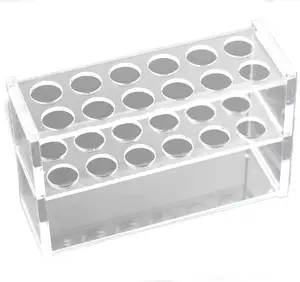
Wholesale Price PE Tube Spacers For Tubing Separators / CNC Plastic Pipe Spacers / HDPE Block Spacer Duct Bank Spacers For Pipe





The 50mm tube holder is a versatile laboratory accessory designed to accommodate tubes of 50mm diameter. This category of lab equipment is essential for researchers and technicians who require a stable and reliable method to hold test tubes during experiments or while conducting analysis.
Tube holders come in various materials such as iron, aluminum, and polycarbonate (PC). Each material offers distinct advantages, from the durability of iron to the lightweight nature of aluminum and the clarity of PC. The choice of material often depends on the specific laboratory requirements and the nature of the experiments being conducted.
Design is a critical aspect of the 50mm tube holder. They are available in different colors like black, red, and green, allowing for color-coding during complex procedures. Additionally, these holders are designed to be eco-friendly, minimizing the environmental impact of their use in laboratories.
The primary application of the 50mm tube holder is to securely hold test tubes in place. This is crucial in preventing spillage of substances and ensuring the integrity of experimental results. The advantages of using a dedicated tube holder include improved organization, enhanced safety, and increased efficiency in the laboratory setting.
When selecting a 50mm tube holder, it is important to consider the specific needs of your laboratory operations. Factors such as the chemical resistance of materials, the holder's capacity, and its compatibility with other lab equipment should be taken into account to ensure that the chosen holder meets the demands of your applications.
Today's laboratories are increasingly conscious of their environmental footprint. Choosing an eco-friendly 50mm tube holder can contribute to sustainable practices within the scientific community. These holders are designed to be reusable and are made from materials that are less harmful to the environment.